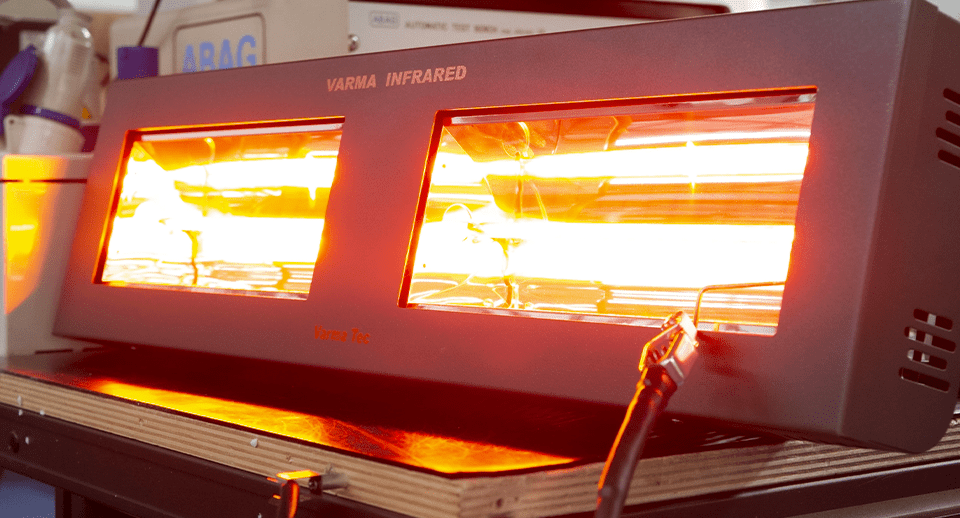Did you know that infrared heating heats surfaces just like the sun does?
It is often the case that the greatest technological innovations come from observing nature. Heating systems are no exception. Thanks to a physical principle that we experience every day on our skin, our heating systems have been able to undergo great technological progress. We are talking about infrared heating; here is what it is and how it works.

What is infrared heating
Infrared heating is a heating system that uses infrared rays to heat the room evenly and efficiently, limiting waste.
Almost all traditional heating systems heat and move the air around them. They are designed so that cold air enters, is heated and then released into the room in a constant cycle. These systems may be different in efficiency, but they are all characterised by high energy loss, stratifying the heat zones – higher temperatures towards the ceiling and lower temperatures towards the floor – and generating, in many cases, an unpleasant sensation.
Infrared heaters, on the other hand, heat the environment in a very different way from convection heaters: they diffuse infrared rays, invisible to the human eye, in exactly the same way as the sun does, by irradiating the environment and directly warming the surfaces of everything they come into contact with (including the human skin), which in turn gently releases heat into the surrounding air.

How infrared heating works
The big difference between traditional and infrared heating lies in the nature of its operation, which, thanks to the specific use of infrared rays, is able to heat rooms with great efficiency and without waste.
Without getting too technical, infrared energy travels at the speed of light without heating the air it passes through, and is absorbed and diffused (or reflected/refracted) by the objects it hits. You know that pleasant feeling of warmth on your skin on a sunny morning in early March? There, that feeling is the work of the infrared rays, radiated by the sun, warming your skin without directly affecting the surrounding air.
But not all infrared is the same: it has different wavelengths and can have numerous applications. In the same way, the technologies of infrared panels, which change power and type of radiation depending on the desired use, can vary. There are different infrared heating systems for commercial, industrial or domestic use.
But the most important thing is that infrared rays are safe for our health, are invisible and are non-polluting.

Advantages and disadvantages of infrared heating
Now that you know what infrared heating is, you may be wondering if it is right for you? Here are the main advantages of an infrared heating system:
- Infrared heaters generate immediate heat from the moment they are switched on, precisely because they directly heat the surfaces affected by the radiation.
- With this type of systems, there is no heat loss from the source and they can also be used outdoors or in large industrial areas.
- Infrared heating is safe and allows you to drastically reduce the risk of fire, since there is no combustion.
- In this type of heater, the heat is easily adjustable with great precision.
- Depending on the type of panel, the infrared heater can efficiently radiate areas of different widths.
- Infrared heating is extremely quiet, making it ideal for both commercial and domestic environments.
- This type of system does not create air displacement, preventing dust from being raised.
- Infrared heating is maintenance-free, saving you money.
- By directly heating the surfaces with which infrared rays come into contact, condensation and mould formation can be avoided.
- Infrared panels are easy to install and do not require complex and expensive masonry work.
- Infrared technology is clean and non-polluting.
- In addition, some infrared heaters also give you the option of regulating the heat via your smartphone.
